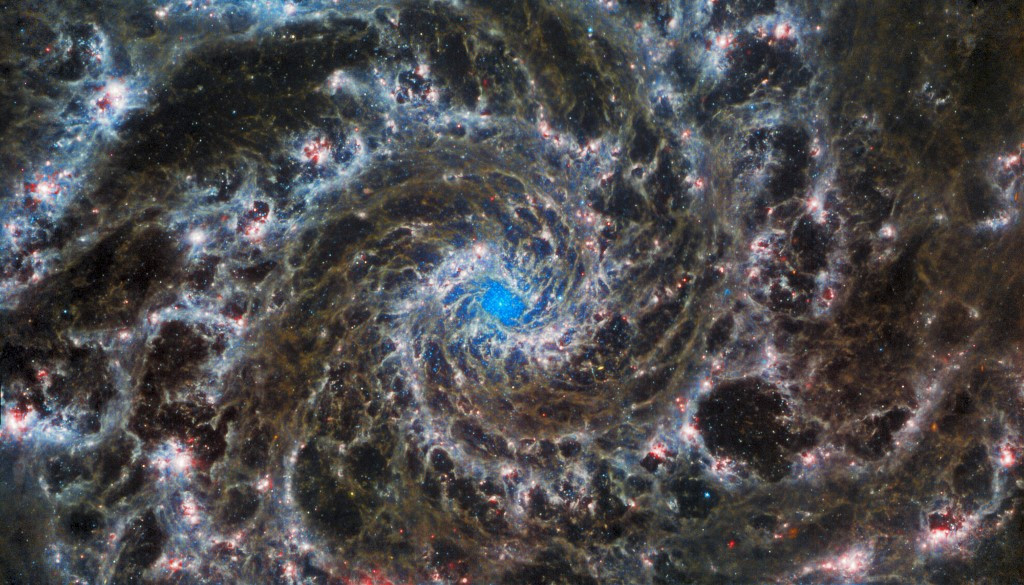
Scientists have discovered huge levels of carbon in the early cosmos, roughly a billion years after the Big Bang, using NASA’s James Webb Space Telescope (JWST). The universe was assumed to be made up of lighter components like hydrogen and helium at the time. Heavier elements did not enter the scene until much later. However, new research indicates that heavier atoms are more frequent than previously supposed.
Providing insights into the cosmic past, into the different processes that produced the universe as we know it now, is one of Webb’s primary goals. The telescope just celebrated its first scientific anniversary. With a planned lifespan of at least a decade, we may expect the space observatory to learn more about the universe than any of its predecessors.
Cosmic Dawn: The birth of the first stars and galaxies took shape
Cosmic Dawn refers to the first billion years following the Big Bang when the first stars and galaxies began to form. The process through which stars produce heavier elements at their centers is known as stellar nucleosynthesis. These heavier elements build up until the stars run out of nuclear fuel and die, releasing their stuff into space—a slow process.
Scientists examined galaxies 800 million years after the Big Bang
Scientists used Webb to peek into the distant universe to analyze dust that originated during this period in the universe’s history and discovered something astonishing. According to ScienceAlert, they detected a strong feature related to the absorption of light from carbon-rich dust in galaxies as early as 800 million years after the Big Bang.
Carbon could have been emitted as a result of dying stars
Surprisingly, these carbon-filled dust grains were thought to have formed over hundreds of millions of years. So, what accounts for the abundance of carbon observed by Webb in these early galaxies of the Cosmic Dawn? Carbon may have been expelled as a result of the death of huge stars, which eject their content into space as they die, according to scientists.
The lifespans of stars in the early cosmos were quite short
The initial stars that originated in the universe are thought to be much more massive than the stars we see today. Because such large stars run out of nuclear fuel quickly, they have a relatively short lifespan. When these massive stars near the end of their lives, they explode in a supernova, potentially releasing heavier materials into space, such as carbon.
Stars that currently exist in the cosmos are also dust producers
Stars visible today also discharge a lot of dust. These cosmic phenomena, known as Wolf-Rayet stars, are on the point of going supernova. Such dying stars contain large amounts of nitrogen or carbon and are ejecting mass at a rapid rate. Earlier this year, Webb landed a Wolf-Rayet star.






